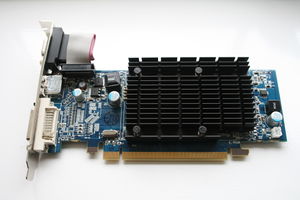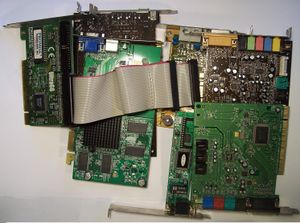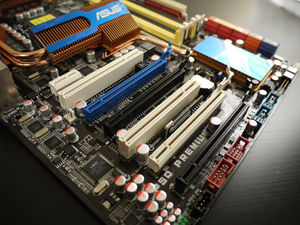Peripheral Component Interconnect
 From Conservapedia
From Conservapedia 


Peripheral Component Interconnect (or PCI) is a local data bus used by computers for attaching hardware devices not originally included with the device. Simply put, PCI cards allow users or companies to add or improve functionality of a computer.
History[edit]
On June 22, 1992, Intel released their new bus, named Peripheral Component Interconnect, to enable support of a variety of new hardware.[1] When first introduced, the bus could run at the same speed as the central processor, about 133MB/s. For this reason, only one PCI port was offered on the motherboard.
However, as processors have evolved, they have become capable of processing speeds much greater than Peripheral Component Interconnect buses. For this reason, most computer now can support more than one card simultaneously.[2] As PCI proved a useful addition to the computer, it was updated several times. PCI version 2.0 was released about a year later in 1993, and in 1995, PCI 2.1 was released as an expansion to the ISA bus.[1]
In 2002, PCI was replaced by PCI Express (also known as 3rd Generation I/O (3GIO) or PCIe). Using its "lanes" (wires) in full duplex mode, PCIe is able to perform more quickly, since data can be sent in both direction at the same time on each lane. It can communicate at about 250MB/s.[3]
Usage[edit]
At this time, computers almost always offer two or more PCI Express ports. Many people do not use these ports, but a wide variety of PCIe cards are available to those who do. These cards include:
- Ethernet adapter
- Dial-up Internet adapter (largely obsolete)
- Wireless Internet (WLAN or "WiFi") transceiver
- Sound card
- Serial ATA or Parallel ATA adapter (internal or external)
- RAID backup card
- Graphics card (GPU)
- USB hub
- Joystick/game control adapter
- Firewire adapter (largely obsolete)
- 9-pin Serial port adapter (largely obsolete)
- Various DIN (Deutsches Institut für Normung) adapters
References[edit]
- ↑ 1.0 1.1 http://www.computerhope.com/jargon/p/pci.htm
- ↑ http://computer.howstuffworks.com/pci1.htm
- ↑ http://www.computerhope.com/jargon/p/pciexpre.htm
Categories: [Computers]
↧ Download as ZWI file | Last modified: 02/23/2023 13:20:20 | 13 views
☰ Source: https://www.conservapedia.com/Peripheral_Component_Interconnect | License: CC BY-SA 3.0
 ZWI signed:
ZWI signed: KSF
KSF